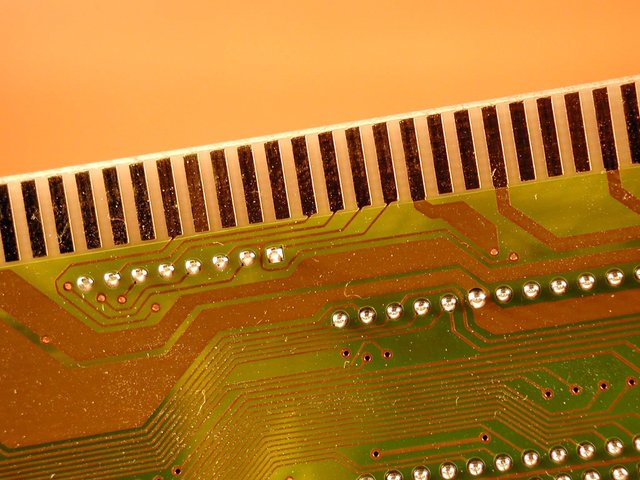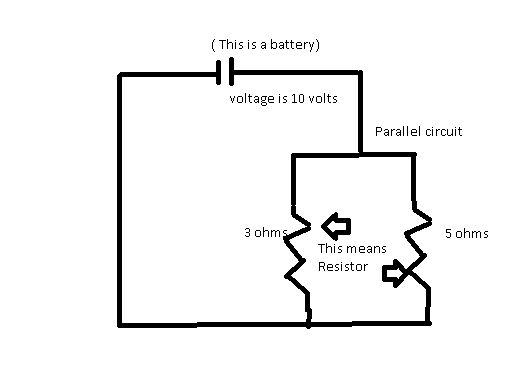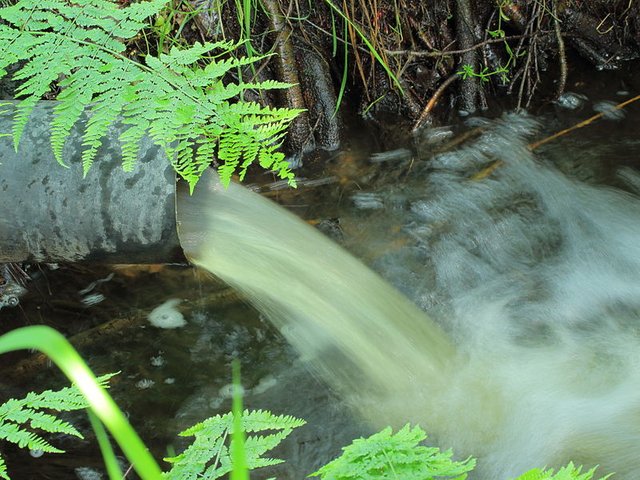Power and electricity - basic physics - part five
You here the word power all the time but do you really know what it is?

( source )
Power companies are energy companies
You heard me right. "Power companies" sell energy. Power is energy a second (joules a second) and power companies sell you kilowatt....hours... This is time multiplied by power or....energy. You have been lied to your entire life. (Well some of you.)
Power in movement
Power is the change in energy a second. This can be used in limited circumstances in movement. Imagine you are speeding up an object using a machine (say a rocket) and you can read how much fuel is being used. You can then compute the change in energy and then the change in velocity from that.
Power is only really used in machinery. The amount of power can be changed in machinery but in (basic) collisions and acceleration power will be the same so is not necessary.
Power is used mainly in electronics and circuits, which is what we will be learning about today.
Amps, voltage and ohms
Voltage is "potential difference". Difference in the force of electricity in a wire over normal.( My next post will be explaining field forces that is not needed for a basic understanding. ) It is the amount of electrical charge contained in an area. The unit for voltage is V which is joule a coulomb. A coulomb is a measure of charge. I will go into that with my field forces post.
Amps or amperage are a unit of current. They are how fast the field moves. Imagine that electrons are water. The hose can have a high pressure (voltage) but can not do anything unless you open it up, which creates current. Current is caused by a high voltage area going into a low voltage one. They have their own unit, I, it is not based on any other.
Ohms are the measure of resistance within a circuit. An object that does not perfectly carry electricity has a resistance (hint they only come close to being perfect). Resistance slows down the current and releases energy as heat. Nothing resists uniformly but since it is usually a form of plastic or rubber (if a large amount is needed) if you mix it well you can get close. The wider the object is the less resistance it has while the longer it is the more it resists.
You can think of it like a hose filled with water. The pressure tries to force the water out and resistance is the obstacles preventing or slowing it from doing that. If the tube is long and narrow it is a lot harder. If the tube is wide but filled with a heavy fluid or rocks, the water must push past that.
The relation between resistance, volts and amps is simple. Amps = volts/resistance
( source)
Series vs parallel circuits
Imagine the pipe from before. You can either have one long pipe or many pipes in parallel. Each having a start and end point in the same position. An object in the one long pipe would slow down all of the water, while an object in the parallel pipes would only slow it down in that pipe. That means that if a resister is in a series circuit would make all the amps over a the entire circuit go down. In a parallel circuit this would only slow down the part of the circuit that is parallel.
Voltage in parallel circuits is basically the opposite of amperage. If you imagine it as water pressure in a series circuit after each drop in speed the pressure on the other side is lower, even if there is no more obstacles. In a parallel circuit, even if one is slower the same amount of pressure goes into each one. It is the same with voltage.
However, when a parallel circuit splits off before it recombines each part is in reality a series circuit.
Resistance of circuits
Resistance is easy to find in a series circuit. You just add up all of the resistances and blamo you got it, nice job.
A parallel circuit is a little harder. You add the reciprocal of each resistance in each part that is parallel and then take the reciprocal of that. For example if I have a circuit with 3 parallel parts. One 5 ohms, one 2 ohms, one 10 ohms. 1/5 + 1/2 +1/10 = 8/10
The reciprocal of that is: 10/8 or 1.25 ohms.
The total is less than the smallest part, how is that possible?
Well remember before when I said the more area each part of the pipe has the more is able to flow at once? Well this is simply extra area in the form of more pipes.
Now we really get into power
Power is equal to current times voltage. This can be used in many situations. The voltage drop after a resistance is released as heat, which is energy that we can measure. Now power has a use. Imagine the pipe again, how much water is flowing through a second is how much power it has.
Power is measured in watts. You can check on most household appliances how many watts are used. Remember power is a joule a second and the average computer uses (about) 400 watts. This is enough to lift a person a meter every 2.5 seconds. (100 kilogram at 10 gravity.) Space is defined at 100 kilometers.... Without air resistance you could reach space in less than 3 days. (using mgh and assuming gravity is relatively the same, which it basically is as the earth is so large.)
Although this may be harder in practice.
Power is easier to explain in the context of circuits, lets see a few!
Circuit practice and examples

( source)
Let's see what we can find out!
Let's start with the resistance of the parallel part. 1/3 + 1/5 is 8/15. This means the resistance is 15/8 or 1.8 ohms.
Remember the equations from earlier?
V = I R
10 = I *1.8
I = 5.6 amps
Now let's find out how much power this produces!
P = I V
P = 5.6 * 10
P = 56 watts
56 watts of power go through this circuit! They are lost through heat to the resistor.
Now lets talk a bit about what a resistor is. A resistor can be anything, mainly they are for three uses. To reduce voltage and current, produce heat/light(light-bulbs) or to do work on an object( for example moving an object using an electric motor).
Everything does resist at least a small amount. This means current can not reach infinity. This means moving electricity over large distances dissipates a lot of it.
Parallel circuits are more useful
We live on them. Without them we would have none of the household appliances we have today.
In a series circuit taking a piece out would stop the circuit as the electrons would no longer be able to travel it. In a parallel circuit taking a piece out would still allow the others to function. Not every socket needs something in it to function. Remember old christmas lights where if one went out the whole thing stopped working? That's because it was a series circuit.
coming soon
more advanced circuits
field forces (including gravity and electricity)
more in depth gravity
anything you guys suggest
If you liked subscribe for more like it!

i try to comment but i have nothing to add. yay physics. thank you.
same lol
Imagine tomorrow without electricity. We would be a hot messntrying to live. We are absolutely dependent on electricity
Thanks for sharing! Note a typo: P = V I and not RI ;)
This was a great article and I just wanted to let you know that I talked about it in my article as an example of what I was talking about: https://steemit.com/academia/@melek/the-best-way-to-learn-anything
Thanks for the great example!